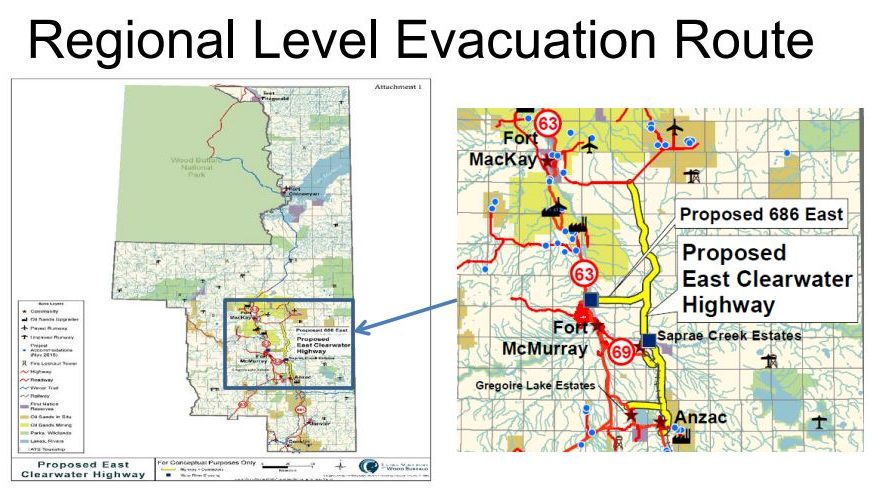A second way in and out of our community could finally become a reality, but the lengthy process necessary to approve and build the proposed new highway has only just begun.
On Wednesday evening the Wood Buffalo Recovery Committee unanimously approved recommending that council pursue building the highway with the understanding the estimated $1.5 billion dollar project could not be completed without financial and political support from the federal and provincial governments and likely from industry as well.
The proposed East Clearwater Highway would provide an alternate route for all communities between Anzac and Fort McKay, using access roads at the East Athabasca Highway, at the urban core, at Saprae Creek, and at Anzac, increasing safety for those communities on a regular basis, on Highway 63 daily, and in the event of an emergency like a wildfire or a dangerous goods spill.
"It just needs to happen," says an emotional Giles. Recommending writing to province to appeal for support in addition to formal ask #ymm
— MyMcMurray (@MyMcMurray) October 19, 2016
The initial recommendation would see the RMWB put forward $5 million for pre-design provided there’s an approved cost-sharing plan with the province and federal government officially on board.
If council approves the recommendation on Tuesday evening, Mayor Melissa Blake would write letters to both levels of government to explain the importance of the project in addition to the formal appeal.
You can read the presentation on the mitigation plan presented to the WBRC by clicking here: Mitigation Plan
“It just needs to happen,” said an emotional Marty Giles, who chairs the sub-committee on mitigation, the pillar under which this program falls. He said the move makes sense not only for the safety and well-being of the people who call this community home but for the safety of those who come from across the country to work here and share in the prosperity offered by our region.
He said the fact the loss of life was not catastrophic in the wildfire was a case of luck and chance repeated over and over. Providing a second way out in any future emergency is essential.
“Tie it back to the disaster that occurred in your community in May, and the pressing need to evacuate literally 88,000 plus people from the entire region, you would be better served and more resilient if you had that road,” said Dana Woodworth, Recovery Team Lead.
He encouraged the WBRC to make it known to council the window is closing on appeals for funding for major projects like this and that the request for financial assistance needs to be made as quickly as possible if the project is to get the backing it needs from the other levels of government.
“It’s a philosophical concept. The reality is, the disaster occurred in early May of 2016, it’s mid-October and you have to, at some point, as a region, land on the learnings and the way forward,” said Woodworth. “And I believe sufficient time has passed and sufficient analysis and it is time to decide and seek the level of support that’s required to become more resilient as a region.”
The proposal will go to council Tuesday, October 26 and public delegations are invited.







